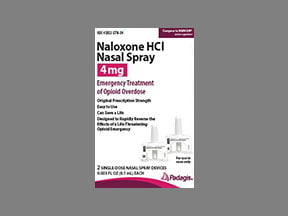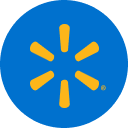
Naloxone Coupons & Savings Card – Discount Prices from $35.87
Generic for: Narcan, Lifems naloxone, Kloxxado
My prescription
Edit
4MG/0.1ML, Naloxone (2 Liquids)
Select pharmacy

CVS
$51.90
COUPON PRICE
Albertsons
$35.87
COUPON PRICE
Walmart
$43.04
COUPON PRICE
Walgreens
$44.14
COUPON PRICENaloxone savings card
Show this card to your pharmacist
Albertsons
$35.87
BIN
ID
PCN
GRP
011867
LH9A04A9B9
HT
LABH001
Powered by
More prescriptions for opioid overdose
More prescriptions for opioid overdose
Price history for Ft Naloxone Hcl (brand) & Naloxone (generic)
2 Liquids, 4MG/0.1ML
Average retail price for Ft Naloxone Hcl
Average retail price for Naloxone
Average SaveHealth price for Naloxone
Our price history data is based on aggregated prescription data collected from participating pharmacies in America. Our prescription data updates daily to reflect the latest price changes. If you notice a missing data point, it means there wasn't sufficient data available to generate a monetary value for that date.
We analyzed Naloxone prices for (4MG/0.1ML, 2 Liquids) over the last 12 months. The average retail price was $42.06, while the average price using the SaveHealth discount card was $36.35. That's a savings of approximately 13.58% when using our Naloxone coupon.
Compared to the generic version, Ft Naloxone Hcl had an average price of $80.04 over the same time period. With the SaveHealth savings card, Naloxone is 54.59% cheaper on average than Ft Naloxone Hcl.
*Retail prices are based on pharmacy claims data, and may not be accurate when we don't have enough claims.
Naloxone dosage forms
Dosage Quantity Price from Per unit 4MG/0.1ML 2 Liquids $53.86 $26.93 4MG/0.1ML 1 Liquid $31.43 $31.43
| Dosage | Quantity | Price from | Per unit |
|---|---|---|---|
| 4MG/0.1ML | 2 Liquids | $53.86 | $26.93 |
| 4MG/0.1ML | 1 Liquid | $31.43 | $31.43 |
Naloxone Warnings
The following safety information outlines critical warnings for the use of this medication. It is important to understand these risks and discuss any questions with your healthcare provider.
Opioid Withdrawal: Naloxone may induce sudden opioid withdrawal symptoms or reveal hidden pain in individuals who regularly use opioids or have been administered opioids during surgery. Symptoms can include general pain, abdominal discomfort, diarrhea, rapid heartbeat, fever, sweating, nausea, vomiting, irritability, and trembling. In infants, sudden withdrawal can be life-threatening, potentially leading to seizures, excessive crying, and abnormal reflexes. It is essential to inform your healthcare provider immediately and closely monitor these symptoms in anyone who has been administered naloxone. Risks include habitual opioid use, infants under one month old exposed to opioids, and opioid use during surgery.
Worsening of Opioid Overdose Symptoms: While naloxone can initially improve symptoms of an opioid overdose, these symptoms may worsen as naloxone's effects diminish within 30 to 90 minutes. Since opioids typically remain in the body longer, it is crucial to call emergency services during an opioid overdose. Remain with the affected individual after administering naloxone, regardless of apparent symptom improvement, until medical personnel arrive. This risk is heightened in those using long-acting opioids.
Limited Effectiveness: Naloxone might not be as effective in individuals using opioids with mixed receptor activities, such as buprenorphine. Multiple naloxone doses may be necessary to counteract such medications effectively. Ensure a new naloxone device or nasal spray is used for each additional dose. This situation is relevant for those taking pain medications containing buprenorphine or pentazocine.
Heart Problems: Naloxone can cause serious cardiac issues, such as seizures, irregular heartbeat, pulmonary edema, or blood pressure changes, especially in individuals with a history of heart problems or those on heart-affecting medications. Rarely, it may lead to brain complications, coma, or death. If planning a surgery involving opioid use, disclose your medical history to your healthcare provider in advance. Risks increase for individuals with a history of heart problems, those on heart-impacting medications, and opioid use during surgical procedures.
There are no specific contraindications listed for this medication. Always consult your healthcare provider for personalized advice.
Naloxone Side Effects
Common side effects:
- Temporary increases in blood pressure
- Headaches
- Dry nose
- Nasal congestion
- Nose pain or swelling
Less common but important to monitor:
- Nausea
- Dizziness
- Lightheadedness
Serious side effects:
- Constipation
- Stomach pain
- Toothache
- Muscle spasms
- Muscle pain
- Withdrawal symptoms
- Seizures (in infants under four weeks)
- Excessive crying (in infants under four weeks)
- Muscle twitching (in infants under four weeks)
- Allergic reaction (rash, swelling, severe dizziness, trouble breathing)
Naloxone Interactions
Naloxone is a medication used to rapidly reverse opioid overdoses by blocking the effects of opioids on the brain. While naloxone is generally safe and effective, it's important to be aware of how it interacts with other substances and medications.
Opioid Medications: Naloxone counteracts the effects of opioids such as morphine, Oxycodone, and heroin. In individuals dependent on these substances, administering naloxone can precipitate withdrawal symptoms, including nausea, vomiting, sweating, and increased heart rate. These symptoms, while uncomfortable, are typically not life-threatening and are preferable to the risks associated with opioid overdose.
Buprenorphine (Suboxone, Subutex): Buprenorphine is a medication used to treat opioid dependence. Naloxone can reduce the effectiveness of buprenorphine, potentially leading to withdrawal symptoms in some individuals. This interaction is particularly relevant when naloxone is administered to someone using buprenorphine as part of their treatment plan.
Clonidine (Catapres): Clonidine is often prescribed to manage high blood pressure or withdrawal symptoms. When used in combination with naloxone, clonidine may become less effective, which could impact blood pressure control.
Monoamine Oxidase Inhibitors (MAOIs): MAOIs, such as phenelzine and Tranylcypromine, are a class of antidepressants. Combining naloxone with MAOIs may lead to serious reactions, including serotonin syndrome or opioid toxicity. Therefore, the use of naloxone is not recommended for patients taking MAOIs or within 14 days of stopping such treatment.
Muscle Relaxants: Naloxone may enhance the effects of muscle relaxants, leading to increased respiratory depression. Patients receiving both medications should be closely monitored for signs of respiratory issues, and dosage adjustments may be necessary.
Diuretics: Opioids can reduce the efficacy of diuretics by inducing the release of antidiuretic hormone. While naloxone reverses opioid effects, monitoring for signs of diminished diuresis and adjusting diuretic dosage as needed is advisable.
Anticholinergic Drugs: The concurrent use of anticholinergic drugs with naloxone may increase the risk of urinary retention and severe constipation, potentially leading to paralytic ileus. Patients should be monitored for these side effects when both medications are used together.
Alcohol and Other Central Nervous System (CNS) Depressants: While naloxone is not known to interact directly with alcohol or other CNS depressants, it's important to note that these substances can exacerbate respiratory depression. Naloxone can reverse opioid-induced respiratory depression, but it does not counteract the depressant effects of alcohol or other non-opioid substances.
Health Conditions: Individuals with heart conditions should use naloxone with caution, as it can cause changes in blood pressure and heart rate. Pregnant or breastfeeding women should consult their healthcare provider before using naloxone, as its safety in these populations is not fully established.
It's crucial to inform your healthcare provider about all medications, supplements, and health conditions before using naloxone to ensure its safe and effective use.
